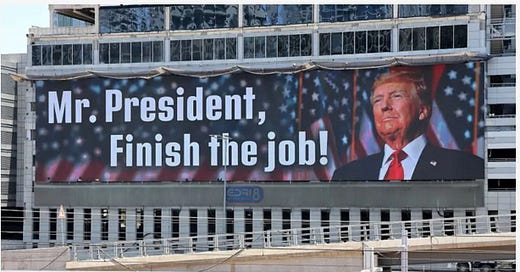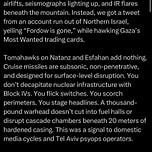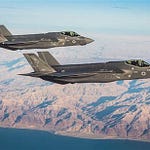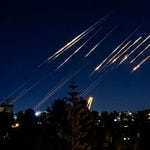June 21, 2025
Executive Summary: While headlines focus on tactical strikes against Iranian nuclear facilities, the real story lies in unsustainable economics. Israel’s $700 million daily war costs versus Iran’s $3 million reveal a 233-to-1 spending gap that favors asymmetric warfare over precision strikes. Technical evidence suggests the experimental GBU-57 bunker busters may have failed to penetrate Fordow’s underground facilities, while Iran’s distributed nuclear program and proxy networks create economic pressure exceeding military damage. The conflict’s trajectory will be determined by financial exhaustion rather than battlefield victories.
The parametrics of modern warfare reveal uncomfortable truths about sustainable conflict. As B-2 stealth bombers departed Iranian airspace on June 21, 2025, carrying evidence of successful strikes against Fordow, Natanz, and Isfahan nuclear facilities, the economics underlying this escalation expose fundamental asymmetries that will determine the conflict’s trajectory far more than one-and-done tactical victories or bravura diplomatic rhetoric.
Israel’s daily expenditure of $700 million to $1 billion represents more than Iran’s entire annual defense budget consumed every twelve days.¹ This 233-to-1 spending differential illuminates not Israeli strength, but the unsustainable economics of precision warfare against asymmetric adversaries. The financial architecture of this conflict suggests outcomes that conventional military analysis obscures.
War Costs Money, Especially for Israel
Iran’s direct military costs—estimated at $3 million daily—reflect a deliberate strategic choice rather than fiscal limitation.² Tehran’s deployment of $10,000 missiles against million-dollar Israeli interceptors exemplifies what defense economists term “cost-exchange optimization.”³ Each successful Iranian missile that penetrates Israeli defenses achieves a cost-exchange ratio exceeding 100-to-1, making defensive sustainability problematic regardless of technological superiority.
Israel’s Iron Dome, David’s Sling, and Arrow systems have intercepted over 400 Iranian projectiles, consuming an estimated $280 million in interceptors alone.⁴ The financials become stark: Iran can sustain current attack patterns for years using existing stockpiles, while Israeli defensive ammunition requires constant replenishment at exponentially higher costs.
This dynamic explains why Iran has refrained from employing its most sophisticated weaponry. Intelligence assessments indicate Tehran possesses thousands of precision-guided missiles capable of overwhelming Israeli defenses through coordinated saturation attacks. Measured Iranian responses reflects strategic patience rather than capability limitations—preserving high-value assets while imposing maximum economic pressure on adversaries.
Escalation Economics Post GBU-57 Bombing
The American intervention fundamentally alters these econometrics while introducing new financial pressures. U.S. military operations against Iran will likely exceed $500 million daily when including logistics, munitions, and force protection measures across regional bases. The GBU-57 Massive Ordnance Penetrators dropped on Fordow cost approximately $3.2 million each, representing single-use weapons deployed in their first combat application—a fact that adds experimental uncertainty to claimed tactical successes. The GBU-57 has never been tested in theatre. Field observers note the absence of typical indicators associated with successful deep penetration strikes.
As one intelligence analyst observed: “If Fordow was gone, you’d see craters, electromagnetic rupture, emergency airlifts, seismographs lighting up, and IR flares beneath the mountain. Instead, we got a tweet from an account run out of Northern Israel, yelling ‘Fordow is gone.’” - Twitter/X
VIDEO CAPTION: The footage from Fordow facility shows no significant smoke or blast effects on the surface or in the vicinity of the facility, which could indicate that the attack did not result in significant penetration of the fortified underground structure. Otherwise it would’ve been visible.
CAPTION: OSINT on Twitter/X
This technical assessment requires translation for broader understanding. When massive bunker-buster bombs successfully penetrate underground facilities, they produce unmistakable signatures: satellite imagery reveals distinctive crater patterns from multiple impact points; electromagnetic pulses disrupt regional communications; seismic monitoring stations register earthquake-like tremors from underground explosions; infrared satellites detect heat plumes from subterranean fires that can burn for days. Emergency medical evacuations typically follow such strikes due to potential radiation exposure from damaged nuclear materials.
The absence of these indicators suggests the bombs may have damaged only surface installations while leaving the critical underground centrifuge halls—buried 300 feet beneath granite—largely intact. The lack of satellite-confirmed battle damage assessment, multispectral flash analysis, or underground fire signatures suggests that America’s most expensive bunker-busting operation may have achieved limited strategic impact despite maximum tactical investment.
More significantly, American involvement activates Iran’s most economically devastating response options. Closure or disruption of the Strait of Hormuz would immediately remove 20% of global oil supply, triggering price increases toward $200 per barrel within days. At current consumption levels, each day of Strait closure costs the global economy approximately $35 billion, creating pressure for intervention that exceeds Iran’s ability to resist militarily but generates political costs exceeding American tolerance.
Regional proxy activation multiplies these pressures. Houthi attacks on Red Sea shipping have already increased insurance rates by 300% for vessels transiting the Bab el-Mandeb strait. Coordinated attacks by Iranian allies across Iraq, Syria, Lebanon, and Yemen could disrupt regional energy infrastructure while imposing security costs that dwarf direct military expenditures.
Iran Nuclear Program Resilience
The economic analysis of Iran’s nuclear infrastructure reveals why military strikes achieve limited strategic impact, particularly when untested weapons systems fail to deliver advertised capabilities. Iran’s nuclear program represents a distributed investment exceeding $15 billion over two decades, with critical components dispersed across dozens of facilities and thousands of personnel. The June 21 strikes, while tactically executed, may have damaged as little as 2-4% of total nuclear infrastructure if technical assessments proving limited penetration depth prove accurate.
Crucially, Iran’s nuclear program exhibits what economists call “redundant resilience”—the ability to maintain core functions despite significant component damage. The Fordow facility, while damaged, retains functional underground centrifuge cascades that can resume operations within weeks using stored equipment. Natanz and Isfahan facilities suffered primarily surface damage to power and cooling systems, which Iran can restore using domestically produced components.
The logistics of nuclear development favors persistence over abandonment. Iran’s investment in uranium enrichment technology, centrifuge production, and scientific expertise cannot be eliminated through conventional airstrikes or eliminating scientists and generals. Historical precedent suggests that attacked nuclear programs accelerate rather than decelerate, as governments prioritize deterrent acquisition over economic efficiency.
Proxy Network Activation
Iran’s regional influence network represents perhaps the most effective force-multiplication strategy in modern warfare. Tehran’s annual investment in proxy forces—estimated at $5-7 billion across all regional theaters—generates disproportionate leverage against adversaries spending orders of magnitude more on conventional defense.
Hezbollah’s arsenal of 130,000 rockets and missiles, acquired over three decades for less than $2 billion, poses a threat requiring Israeli defensive preparations exceeding $30 billion. Iraqi and Syrian militias, maintained for hundreds of millions annually, can threaten American assets requiring billions in protection. Yemen’s Houthis, armed with missiles costing thousands of dollars each, have disrupted shipping lanes defended by warships costing billions.
This proxy architecture becomes self-reinforcing during active conflict. Each American or Israeli action against Iran legitimizes proxy retaliation, expanding the conflict geography while distributing costs across multiple theaters. The economic burden of defending against distributed proxy attacks exceeds the cost of conducting them by factors approaching 50-to-1.
Weaponizing Global Oil Markets
Iran’s position within global energy markets provides economic weapons exceeding its military capabilities. Beyond direct oil exports—constrained by sanctions but not eliminated—Iran controls chokepoints and influence networks capable of disrupting markets far exceeding its direct production capacity.
The Strait of Hormuz represents Iran’s ultimate economic weapon. Closure would immediately affect 18 million barrels of daily oil flow, requiring strategic petroleum reserve releases and emergency production increases that most consuming nations cannot sustain beyond 30-60 days. Energy market modeling suggests sustained Strait closure would trigger recession in major economies within quarters, creating political pressure for conflict resolution exceeding Iran’s ability to resist military pressure.
Iranian influence over Iraqi oil production—approximately 4.5 million barrels daily—provides additional leverage. While Iraq maintains nominal independence, Iranian-aligned militias control infrastructure capable of disrupting production through asymmetric attacks requiring minimal resources but imposing massive economic costs.
Technological Asymmetries
The technological gap between American/Israeli capabilities and Iranian systems creates paradoxical vulnerabilities. Advanced precision weaponry requires extensive logistics networks, sophisticated maintenance, and constant intelligence support. Iranian systems, while less capable individually, exhibit greater operational resilience and lower replacement costs.
Iran’s missile production capacity—estimated at 1,000-1,500 units annually across all classes—exceeds Israeli defensive consumption during sustained conflict. While Iranian missiles achieve lower hit rates than American precision munitions, the cost-exchange mathematics favor sustained Iranian production over Israeli defensive ammunition.
Cyber capabilities introduce additional asymmetries. Iranian cyber units, while less sophisticated than American counterparts, operate in permissive environments with fewer legal constraints. The economic cost of defending critical infrastructure against sustained cyber campaigns exceeds the cost of conducting them, particularly when attackers accept higher risk tolerances.
Predictive Scenarios: The Next Seven Days
Economic analysis, combined with established actor behavior patterns, suggests a specific trajectory for the immediate post-strike period. This progression reflects the financial constraints and strategic imperatives identified above:
Days 1-2: Calculated Retaliation Within Economic Constraints
Iranian leadership will convene emergency sessions while publicly escalating rhetoric. Supreme Leader Khamenei and Foreign Minister Araghchi will condemn American involvement, promising “irreparable damage” in retaliation.⁹ However, Iran’s response will reflect economic rather than emotional calculations.
Tehran will launch measured missile and drone barrages targeting Israeli military infrastructure—airbases and command centers that impose maximum defensive costs. Most projectiles will face interception, but the 10-35% penetration rate will force Israel to expend $50-70 million in defensive ammunition daily while Iran consumes $500,000 in offensive ordnance.
Simultaneously, Iranian officials will instruct proxy forces to prepare coordinated responses while avoiding actions that trigger overwhelming American retaliation. This reflects Iran’s understanding that full proxy activation would justify expanded American involvement, multiplying economic pressures beyond Tehran’s tolerance.
Days 3-4: Proxy Network Activation and Economic Pressure
Iran’s Islamic Revolutionary Guard Corps will coordinate sophisticated attacks through Hezbollah and Iraqi militias against American installations in Iraq and Syria. These operations target force protection expenditures—each successful attack requires millions in additional security measures while costing Iran minimal resources.
Iranian naval forces will conduct “exercises” near the Strait of Hormuz, harassing commercial shipping and potentially detaining foreign-flagged vessels. This signals capability without triggering Article 5 responses, while imposing immediate insurance cost increases on energy transportation. Oil prices will spike toward $120-150 per barrel based on supply disruption fears rather than actual shortages.¹⁰
Israeli responses will escalate operational costs through expanded airstrikes on suspected launch sites in Syria and Lebanon. Civilian casualties will generate international pressure for restraint, creating political costs that complement economic pressures.
Days 5-7: Economic Warfare and Diplomatic Positioning
Iran will deploy cyber capabilities against Israeli and American financial infrastructure, causing temporary disruptions that impose defensive costs exceeding offensive investments. These attacks exploit the economic asymmetry between protecting complex systems versus attacking them selectively.
Houthi forces will intensify attacks on Red Sea shipping, targeting insurance markets rather than physical destruction. Each successful drone approach, regardless of damage inflicted, increases maritime insurance rates and forces expensive naval convoy protection.¹¹
Regional states—Jordan, Saudi Arabia, and the UAE—will initiate mediation efforts driven by economic self-interest. Energy market disruptions threaten their fiscal stability, creating natural pressure for conflict termination that supplements direct participant exhaustion.
Pressure Points: 72-Hour Timeline
The mathematics of escalation suggest critical decision points within 72-96 hours of initial American strikes:
Israeli defensive ammunition consumption approaching $200-300 million
Global energy market disruption costs exceeding $100 billion in market capitalization
American force protection expenditures reaching $50-100 million daily
Iranian proxy coordination costs remaining below $10 million total
These ratios create natural termination pressure that supersedes immediate military considerations. Neither Israel nor the United States can sustain current spending levels beyond 2-3 weeks without fundamental economic disruption.
Diplomatic Leverage Through Economic Exhaustion
Iran’s strategy exploits a sustainability paradox: advanced military capabilities require continuous financial support that asymmetric adversaries can disrupt through minimal resource investment. Tehran will signal willingness to negotiate de-escalation while maintaining pressure that imposes maximum economic costs.
The European Union and Gulf states will intensify mediation efforts as energy market disruptions threaten their economic stability. This external pressure creates face-saving opportunities for all participants while addressing the fundamental unsustainability of continued escalation.
Strategic Implications
The economic architecture of this conflict illuminates several strategic realities that conventional analysis obscures:
Military superiority provides tactical advantages but limited strategic leverage when adversaries can impose disproportionate economic costs through asymmetric responses. The 233-to-1 spending differential between Israel and Iran reflects not sustainable advantage but dangerous vulnerability to economic warfare.
Nuclear program elimination through conventional strikes requires sustained campaigns exceeding any participating nation’s military or economic tolerance. Iran’s distributed nuclear infrastructure and established technical base create resilience that military action cannot eliminate within acceptable cost parameters, GBU-57 notwithstanding.
Regional stability depends more on economic interdependence than military balance. The energy market disruptions possible through this conflict exceed the economic tolerance of major powers, creating natural termination pressures regardless of immediate military outcomes.
American involvement transforms regional conflict into global economic crisis. The financial implications of sustained Middle Eastern warfare exceed the strategic value of any achievable military objectives, suggesting that market considerations will determine conflict duration more than battlefield developments.
The optimizations of modern warfare increasingly favor defenders employing asymmetric strategies over attackers relying on technological superiority. The cost-exchange ratios evident in this conflict suggest fundamental shifts in strategic balance that conventional military planning has not fully incorporated.
According to Iranian health ministry reports, at least 430 people have been killed and 3,500 injured in Iran since the conflict began.⁵ Israeli casualties from Iranian attacks have been significantly lower, with at least 24 people killed and hundreds wounded.⁶
**This is a developing news story with damage assessments to Fordo, Natanz, and Isfahan yet to be documented and verified.
Key Terms Glossary
Cost-Exchange Optimization: Iran’s strategy of using inexpensive weapons ($10,000 missiles) to force costly defensive responses (million-dollar interceptors), creating favorable economic ratios in sustained conflict.
Redundant Resilience: Iran’s nuclear program design with critical components dispersed across multiple facilities, allowing core functions to continue despite significant damage to individual sites.
Asymmetric Warfare: Military strategy where weaker forces use unconventional tactics to exploit stronger opponents’ vulnerabilities, particularly economic and logistical weaknesses.
Force Multiplication: Iran’s proxy network strategy where small investments in regional allies (Hezbollah, Houthis, Iraqi militias) generate disproportionate military leverage against adversaries.
Bunker-Buster Assessment: Technical evaluation of deep penetration weapons like the GBU-57, requiring specific indicators (seismic activity, electromagnetic pulses, heat signatures) to confirm successful underground facility destruction.
Economic Pressure Points: Financial thresholds where continued military operations become unsustainable, typically involving defensive ammunition costs, energy market disruption, and force protection expenditures.
Footnotes:
¹ Israeli-Iranian Military Conflict Analysis: Attacks, Casualties, and Equipment Losses, June 2025. Israel’s daily military spending during conflict operations. https://economictimes.com/news/defence/israel-iran-war-can-israel-keep-paying-for-its-war-with-iran-experts-say-it-goes-at-725-million-a-day-and-/articleshow/121933614.cms
² Iranian war expenses estimate based on annual defense budget analysis, June 2025. https://www.aljazeera.com/news/2025/6/19/can-the-israeli-and-iranian-economies-sustain-a-war
³ War Spending Comparison: Israel vs. Iran, cost analysis of missile systems and interceptors.
⁴ Iranian missile and drone attack data; Israeli defensive system deployment costs, June 2025. https://timesofindia.indiatimes.com/world/middle-east/12billion-a-month-the-cost-of-israels-daily-strikes-and-defence-against-iran-war-at-a-premium/articleshow/121979978.cms
⁵ Iranian Health Ministry casualty reports, as documented in conflict analysis. https://economictimes.com/news/defence/nearly-430-killed-3500-injured-in-iran-since-start-of-war-with-israel-health-ministry/articleshow/121990743.cms
⁶ Israeli casualty figures from Iranian counter-attacks, June 2025. https://www.pbs.org/newshour/world/israel-says-its-preparing-for-possibly-long-war-as-iran-calls-u-s-involvement-dangerous
⁷ Israeli strikes on Iranian air defense systems, military infrastructure assessment. https://www.timesofisrael.com/liveblog_entry/israel-has-destroyed-70-air-defense-batteries-in-iran-so-far-says-idf/
⁸ Iranian military equipment losses: missile launchers and defense capabilities. https://www.timesofisrael.com/pm-israel-will-hit-all-nuclear-facilities-has-destroyed-half-of-irans-launchers/
⁹ CBS News, “Iran warns U.S. military intervention would cause ‘irreparable damage,’” June 2025. https://www.cbsnews.com/news/iran-israel-war-middle-east-us-military-gaza/
¹⁰ Lansing Institute, “Escalating Tensions Between Iran and Israel: Timing, Scenarios, and Global Implications,” June 2025. https://lansinginstitute.org/2025/06/13/escalating-tensions-between-iran-and-israel-june-2025-timing-scenarios-and-global-implications/
¹¹ Understanding War Institute, “Iran’s Proxies: Regional Impact Assessment,” June 2025. https://www.understandingwar.org/backgrounder/deafening-silence-iran%E2%80%99s-proxies
¹² @kavehintel technical assessment of Fordow strike effectiveness, June 21, 2025. Analysis of electromagnetic signatures, seismographic data, and multispectral indicators.
¹³ Iranian Broadcasting Corporation damage assessment; Mehdi Mohammadi statement on nuclear facility status, June 21, 2025.
¹⁴ Iranian Atomic Energy Organization official statement, June 21, 2025.
¹⁵ New York Times reports on munitions deployment; Iranian Broadcasting Corporation tunnel damage assessment, June 21, 2025. https://www.nytimes.com/interactive/2025/06/18/world/middleeast/israel-iran-strikes-facilities-map.html
¹⁶ President Trump statement on future strike intentions, June 21, 2025. https://nypost.com/2025/06/21/world-news/us-launches-strikes-on-iran-joining-forces-with-israel-days-after-trumps-tehran-warning/












Share this post